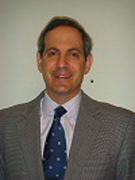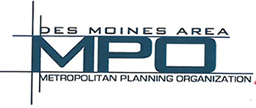Real estate developments and economic development respond to rather than shape the needs of society. Design and regulatory mandates will not induce successful plans or development unless they relate well to the needs and preferences of households and businesses. The needs and preferences of households and businesses will continue to be influenced by ongoing economic, technological, and other shifts.
Cuts in shipping costs and global information networks so ubiquitous that they spawned the so-called Arab Spring have internationalized market areas for many basic industries. Companies like Principal Financial and other financial service firms operating within Des Moines are already exporting their services around the globe. Pioneer Hi-Bred, a developer and supplier of plant genetics to farmers based in Johnston, serves customers across more than 90 countries. Globalization is a controversial subject but one implication is that very few goods producers can survive unless they are able to compete on a worldwide basis. This means firms will be footloose and will shift facilities to the most efficient and/or innovation encouraging workplaces.
The global availability of instant information and the pace of technological change also serve to make innovation a constant requisite of demand. The ability to communicate remotely via electronic interactions does not eliminate the need for face-to-face interaction because they complement or support each other in improving cooperation and trust. This will create increasing demand for mixed-use developments with housing near workplaces.
The social capital of a community – the political and legal infrastructure and culture of personal relationships within which business is done – is a key factor in economic development. In a world of freely moving physical and financial capital, it is only social capital that remains tied to specific locations.
Therefore, successful regions embrace building up the stock of human capital, and fostering the benefits that arise from clustering activities and connecting people. Successful regions and communities within them will provide safe environments, excellent roads and transportation networks and good schools, protect precious ecological resources and beautiful and truly historically significant parts of the urban fabric. Regions and communities within them, however, cannot successfully stem the forces of urban land change or force land use changes through design mandate unless they are market responsive and improve financial feasibility. Successful communities and regions should not erect barriers to new construction (especially higher-density) and growth where demand exists. Successful regions and places within them will above all foster the conditions that allow households, firms and cities to embrace change and reinvent themselves to respond to anticipated and unforeseen pressures and opportunities.
 Aaron Gruen is a principal with the urban economics, market research, land use policy and pre-development services consulting firm Gruen Gruen + Associates where he specializes in identifying strategic policy and marketing actions based on anticipating changes in demography, consumer and user preferences, and technology. Market, investment, and fiscal and economic impact analysis provided by Mr. Gruen have served as the inputs and framework for comprehensive and specific land use plans – such as the “Business as Usual” scenario of The Tomorrow Plan – and also contributes to decision-making around economic development programs, infrastructure programs, land use policies, and housing policies for many communities. Other recent articles by Mr. Gruen include Six Predictions for the New Year and The New Normal Requires New Rules for Success.
Aaron Gruen is a principal with the urban economics, market research, land use policy and pre-development services consulting firm Gruen Gruen + Associates where he specializes in identifying strategic policy and marketing actions based on anticipating changes in demography, consumer and user preferences, and technology. Market, investment, and fiscal and economic impact analysis provided by Mr. Gruen have served as the inputs and framework for comprehensive and specific land use plans – such as the “Business as Usual” scenario of The Tomorrow Plan – and also contributes to decision-making around economic development programs, infrastructure programs, land use policies, and housing policies for many communities. Other recent articles by Mr. Gruen include Six Predictions for the New Year and The New Normal Requires New Rules for Success.




There are many horizons for considering “needs” —some are very short-sighted. That’s why we encourage long-term planning. Whose needs are considered is another important consideration. Also, what is “capital” can be broadly or narrowly construed. In addition to human capital (labor, intelligence, culture, and organization), financial capital (cash, investments, and monetary instruments), and manufactured capital (infrastructure, machines, tools, and factories) a sustainable economy needs natural capital, made up of resources, living systems, and ecosystem services.
In fact, without natural capital, none of the other categories of capital can operate. Though it is often taken for granted, without natural capital (examples include the exchange of carbon dioxide and oxygen among plants and animals, topsoil, forest cover, freshwater ecosystems) human beings cannot live.
I’ve attended the Tomorrow Plan meetings and have been impressed with the quality of planning and thought going into the work. A highlight mentioned in several meetings has been leaving the natural capital of world-class farmland untouched in NE Polk County for future generations to enjoy. No region can be sustainable if it doesn’t have the power to feed its people from local sources if needed.
However, I and others have noticed a huge disconnect. In January the Polk Planning and Zoning Commission passed a newly revised route for the NE Polk County Beltway that goes right through that farmland. This is a recipe for urban sprawl. Citizens need to attend the hearing coming up next Tuesday 2/28/2012, 9:30 a.m., room 120 of the Polk County Administrative Office Building, 111 Court Avenue, Des Moines, IA. The purpose of this hearing is to take public testimony in connection with the proposed Zoning Map amendment to the Official Zoning Map and a proposed map amendment to the 2030 Comprehensive Plan Map. This action flies in the fa cet of The Tomorrow Plan as I understand it. I hope Polk County Citizens will be at this meeting to promote a better vision for the future of our county, one like The Tomorrow Plan is offering
Well said, Margaret! As a society, we have ignored natural capital for far too long, using it up as though current generations were the only ones who mattered. To quote Paul Hawken’s book, The Ecology of Commerce: “Preserving life should be the natural result of commerce, not the exception…Commerce can be one of the most creative endeavors available to us, but is is not worthy of business to be the convenient and complicity bedfellow to a culture divorced from nature.”
I agree that if we are to be a sustainable community and I thought that was what the Tomorow Plan was all about, then we must think of natural capital and not build anymore highways in Polk County at this time. It’s time to think of a futue with less cars and more public transit. I have heard that at the Tomorrow Plan meetings!